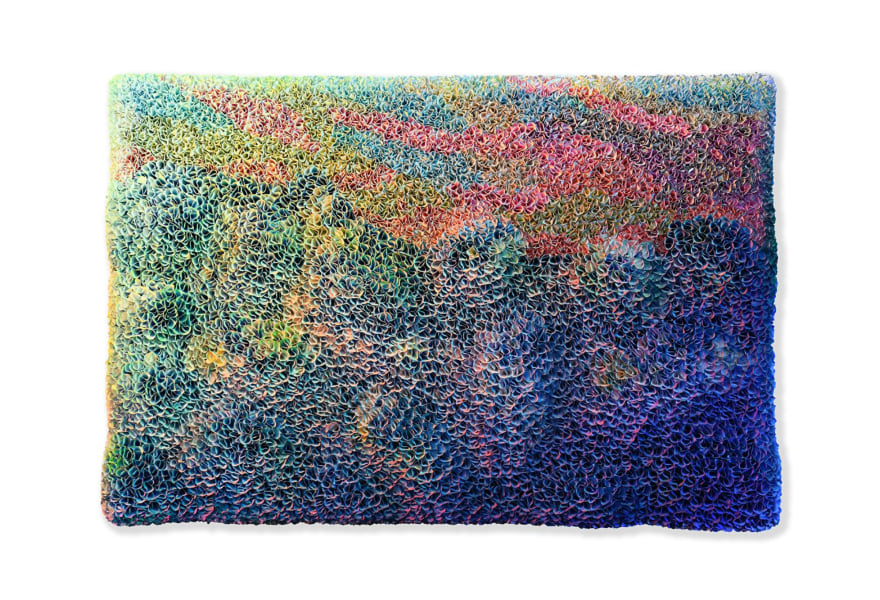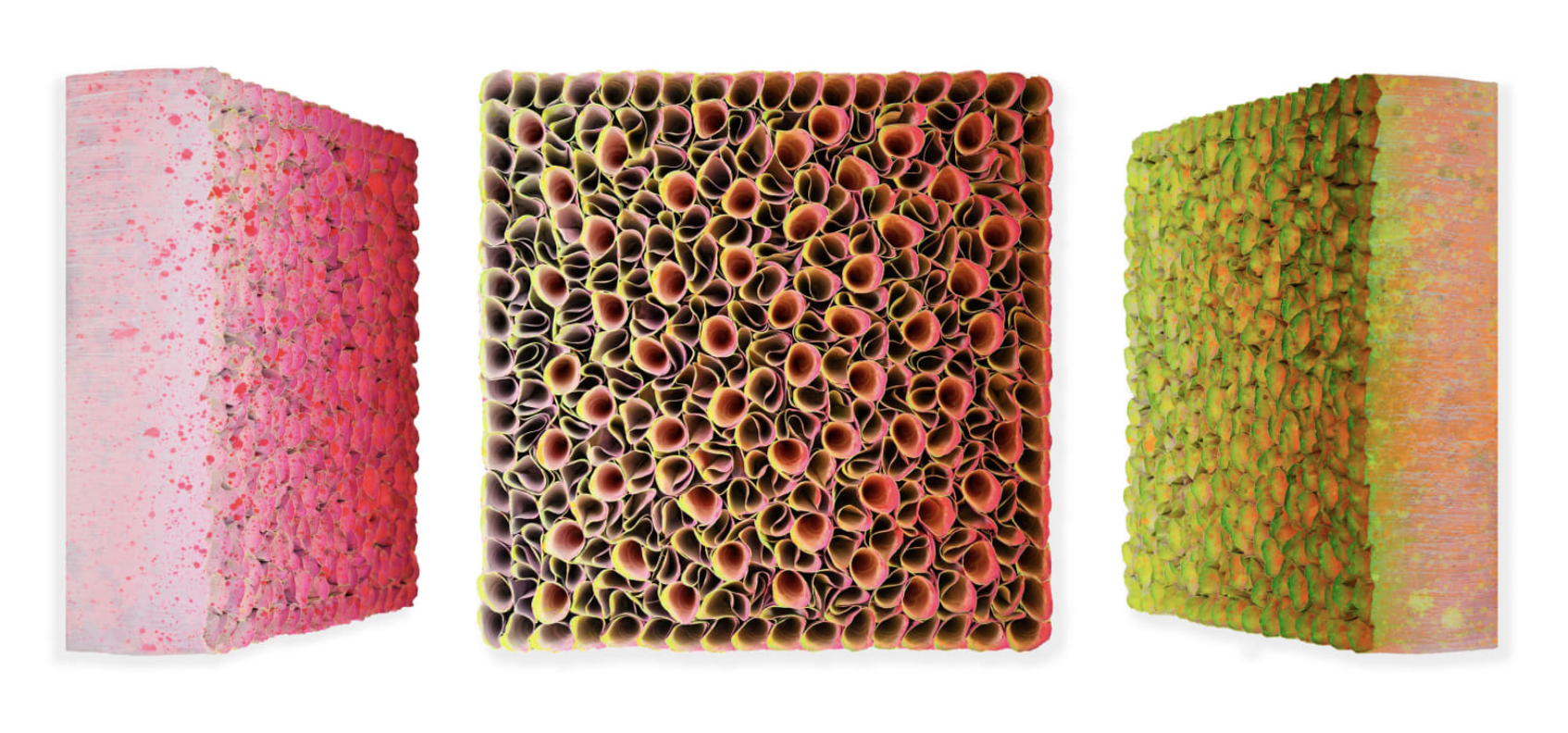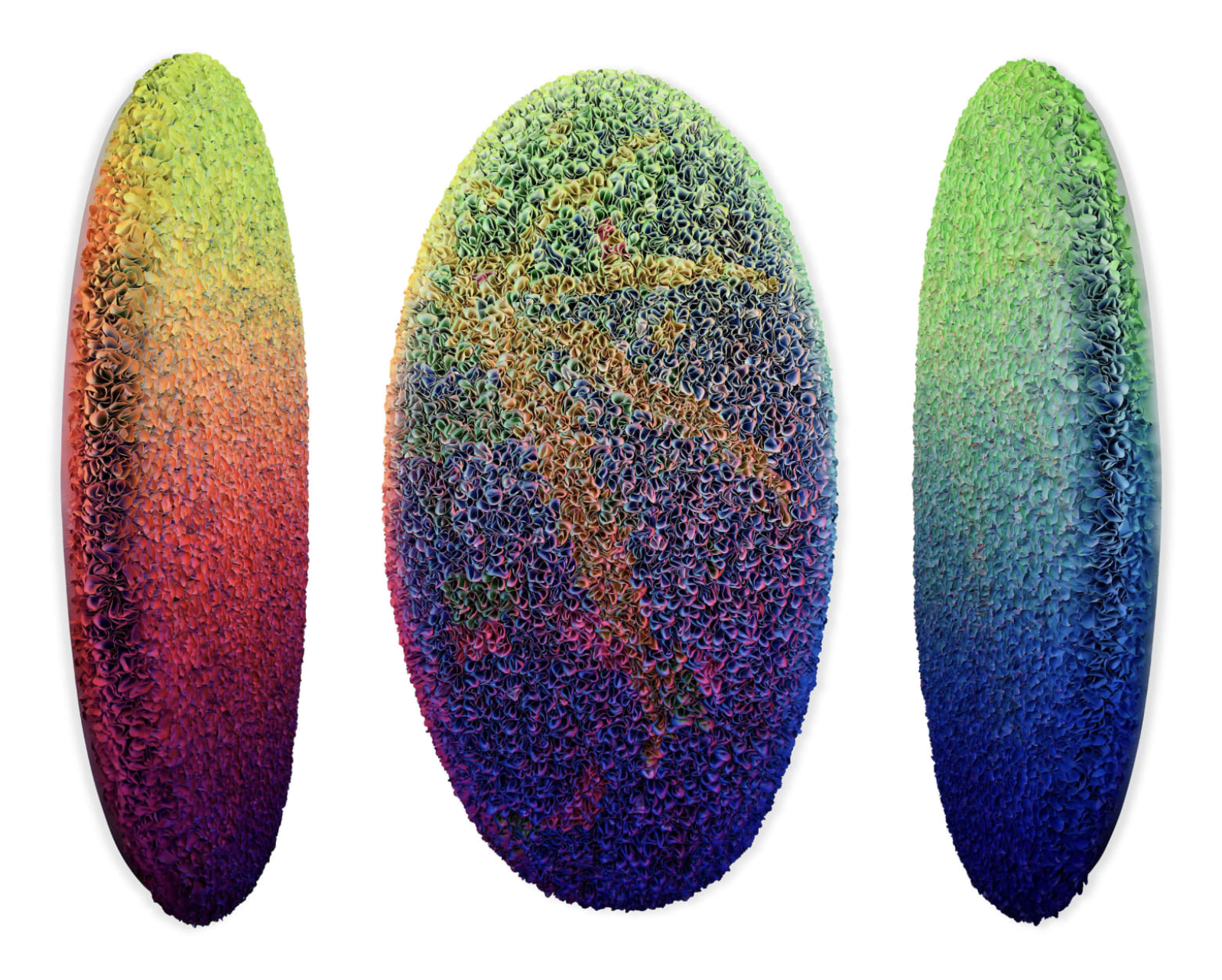20 june 2025, Flor Linckens
Zhuang Hong Yi: a sea of flowers in SmithDavidson Gallery
SmithDavidson Gallery in Amsterdam is currently presenting the solo exhibition 'Waves of Color' by Zhuang Hong Yi. On view until 7 September 2025, the exhibition showcases recent work by the artist, including a new series of sculptural flower fields from his "Wave Series", which respond to light, perspective and movement. The exhibition illustrates how the artist, widely regarded as a leading voice in contemporary Chinese art, continues to explore new forms within his vibrant visual language.
Bringing together several of his series, the exhibition revolves around colour, movement and layering. Zhuang Hong Yi: "Each piece shifts in color and depth as you move — like a prism breaking light. It’s an intimate exploration of perception, texture, and subtle movement."
Nature, and the flower in particular, has played a central role in Zhuang Hong Yi’s practice for many years. The ongoing cycle of nature runs like a thread through his work, a source of inspiration that flows like a rhythm across each piece. In China, the flower symbolises prosperity, elegance and impermanence, a meaning the artist connects to the visual richness of the Dutch tulip fields that deeply moved him when he first saw them. At the same time, the flower serves as a quiet protest against urbanisation, the depletion of natural resources and a broader ecological crisis.
Zhuang Hong Yi’s practice generally consists of two artistic forms that both hover between painting and sculpture. In his renowned, three-dimensional "Flowerbed" series, he incorporates delicate, hand-folded and painted rice paper petals (a traditional Chinese technique) into sculptural compositions that appear to shift in colour, depending on the light and your point of view. The works seem to come to life in a play of repetition and refinement. This method is notably labour-intensive and physical, with some works made up of hundreds of meticulously shaped petals.
He also creates landscapes, inspired in part by the Impressionist paintings he encountered at the Musée d’Orsay, but equally inspired by other Western art traditions. He works with vivid, expressive brushstrokes, dripping paint and elements of paper. Zhuang Hong Yi: "I like to use my hands to spread the acrylic and pigment across the canvas, which then forms the foundation of the work later on." The result is consistently meditative, stirring a sense of wonder and touching on universal themes such as transformation, transience and connection. His work moves between control and intuition, between abstraction and figuration.
The artist also frequently works in triptychs. Zhuang Hong Yi: "There is just something majestic about a triptych: three panels that together form one."
His work also carries a poetic and philosophical dimension and represents an ongoing search for meaning, with flowers functioning as a universal language, capable of bridging differences. Zhuang Hong Yi: "I explore art as rejuvenation, art as rest. My response to the sense-uncertainties of contemporary life — its radically changing conceptions of the time we have and the spaces we inhabit — is to engage the viewer in a conversation.”
Zhuang Hong Yi was born in 1962 in Sichuan province, China, where he studied at the Sichuan College of Fine Arts. In the early 1990s, he moved to the Netherlands to continue his studies at the Minerva Academy in Groningen. Since then, his work has existed at the intersection of East and West, merging traditional Chinese materials and traditions with a more Western approach to colour and form. Today, the artist divides his time between Switzerland and China.
His work has been exhibited in institutions such as the Groninger Museum, the Ulm Museum and the Powerlong Museum in Shanghai, which hosted a major survey of his work earlier this year. He also participated in the Venice Biennale, and his works have been shown at fairs including TEFAF Maastricht, Art Miami and Zona Maco. His work was recently added to the collection of the new Rosewood Hotel in Amsterdam.



